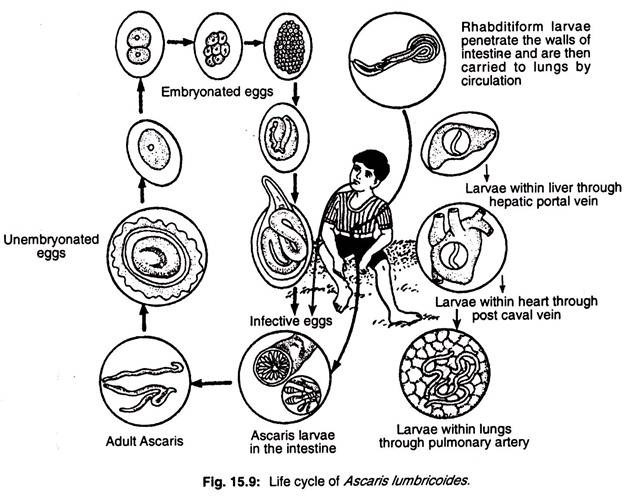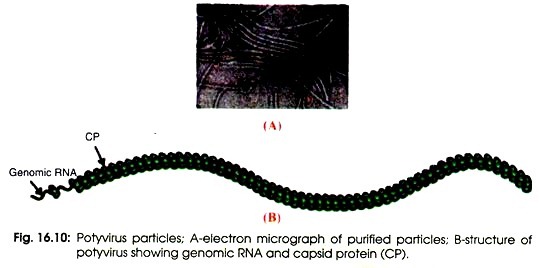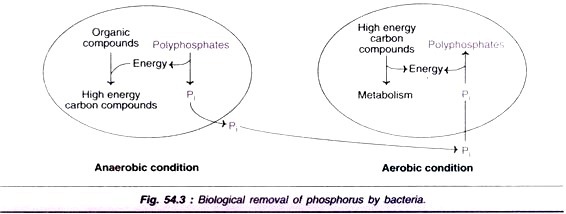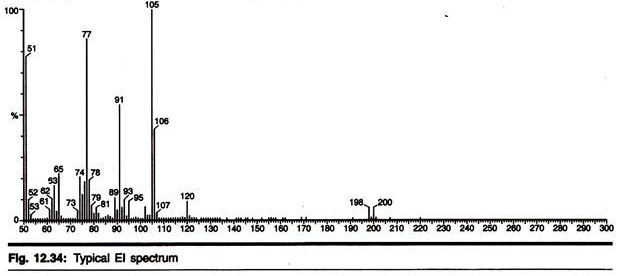ADVERTISEMENTS:
Bioprocessing of biomaterials for conversion into methane by anaerobic archaebacteria is a process better understood each day.
In bioprocessing the size and design of the digester should be such that it can handle soluble or insoluble materials available to produce the desired quantity of gas.
“Methanogens no longer are second class citizens of the microbial world”, is the classic statement by a renowned expert of Archaebacteria; R.S. Wolfe. This statement was subsequently supported by convening two important international meetings e.g. “Genetics of Obligate Anaerobic Microorganisms”, Chicago, Illinois, April 22, 1980 and “Genetic Approaches in the Study of Methanogenic Bacteria”, Stockholm, Sweden, April 12-14, 1981.
ADVERTISEMENTS:
The concept proposed by Woese and his co-investigators led reclassification of all organisms into three primary kingdoms. The archaebacteria consists of methanogenic bacteria, the extremely halophilic bacteria, thermoplasma sp. and extreme thermophilic archaebacteria. Among the archaebacterial microorganisms methanogenic bio-processing has gained highest interest. Methane production by methanogenic archaebacteria has been investigated by Wolfe and other investigators for many years. Enormous amount of scientific information in relation to bio-processing of methane formers have been reported.
As they are very slow growing organisms genetic approaches have also been used in more recent studies. Methane producing archaebacteria have surmounted enormous technical problems for describing their taxonomy, fine structure, physiology, growth requirements, developing recombinant DNA molecule and bioprocessing strategy decisions.
Archaebacterial Bioprocessing:
1. Biomethanogenesis:
ADVERTISEMENTS:
The bioprocessing in archaebacterial bioconversion process which occurs when refuse resources like domestic, municipal, agricultural and industrial organic waste materials in slurry are decomposed by mixed microbial growth comprising of acid forming bacteria and methane forming archaebacteria functioning in absence of dissolved oxygen and finally generating methane as major gaseous product thereby reducing environmental pollution strength of the waste to a significant level, has been defined, in general, as “anaerobic digestion” (AD). The hardware used for AD is called digester and the gaseous product obtained is called biogas.
Bioprocessing of biomaterials for conversion into methane by anaerobic archaebacteria is a process better understood each day. In bioprocessing the size and design of the digester should be such that it can handle soluble or insoluble materials available to produce the desired quantity of gas.
Single or double chamber digesters are generally used. Methane production from organic waste resources depends largely on the degree of sophistication of the plant. While methane production efficiency is markedly increased in such plants the cost per therm rises substantially due to additional monitoring and control devices necessary. Methane gas production being not very rapid there is a point at which an optimum economic design must exist to take care of the three phasic complex bioconversion reactions.
A schematic diagram of AD reactions sequence has been given in the literature and reproduced in Fig. 6.1. It has been modeled on the basis of solid, liquid and gas phase of interacting substrates and products of anaerobic digestion of waste solids. Bioprocess engineering and technology approach to establish this point using 1m3 volume plants has been given.
The technology of archaebacterial methanation has taken this advantage primarily in three ways as below.”
First, the strategy of biomethanation has been conducted in continuous, completely mixed conditions without active biomass recycle. It has posed a bottleneck probably by permitting limited number of methanogenic bacteria to be present in the digester mixed liquor.
Since specific methane generation occurred at a slow rate it has advanced design of second generation methane digesters. This design was to trap the methanogenic archaebacteria within the digester for accumulation of coenzyme P420 in methane digestion mixed liquor. P420 acts as shuttle for electrons from hydrogen and replaces ferredoxin in methanogens.
Second, for using insoluble organic substrate in biomethanation the preliminary solubilization of the substrate is often rate limiting. In such a situation the inverse of conversion varies linearly with the inverse of mean residence time. This allows calculation of ultimate conversion.
ADVERTISEMENTS:
It is helpful in identifying problem of rate limitation and archaebacterial competency. Double chamber digestion strategy aids in overcoming the second bottleneck.
Third, improvements of monitoring of parameters like dry organic matter or COD by graphical correlation between heats of combustion, mean oxidation stages and specific COD with biomethanation efficiency. These advantages were in attempt to correlate the newer knowledge of methanogenesis with improved design of archaebacterial biomethanation technologies.
2. Biomethanation rate model:
From the view point of biochemical reaction kinetics by mixed acidogens and archaebacterial flora of complex substrates involves sequential steps of hydrolysis, acidification and biomethanation. In biomethanation the conversion of acids to methane is the rate limiting step, so the step of conversion of acetic acid (major acid) to methane is quite significant.
ADVERTISEMENTS:
The CO2 produced can also participate in the reaction. From the stoichiometric balance it could be seen that conversion of acetic acid should produce 50% CH4 and 50% CO2. So presumably, the CO2 reduction route for methane formation is also involved. Accordingly the most probable mechanism of biomethanation which was noticed to give the best fit with experimental results was proposed to be in which A is acetic acid, X is archaebacteria cell mass, AX is acetic acid-cell complex, B, is CH4 produced directly from A, B2 is CH4 produced by CO2 reduction.
B2X intracellular methane- cell complex produced from CO2 is free CO2, C2 is the amount of CO2 reduced to CH4, and C2X intracellular bound CO2. Analysis of this mechanism of biomethanation showed that in the conversion of A to methane the formation of CH3-S-COM (AX) from a inside the cell is the rate limiting step. Then AX forms free CH4 (B1), free CO2 (C1) and a complex of CO2 and COM inside the cell (C2X).
Next C2X gets reduced intracellularly to methyl-COM complex (B2X) which in turn produced free CH4 (B2) and cells (X) in the last step. It was clear that CO2 which was reduced to CH4 was not extracellular free CO2 but was intracellular CO2. Pictorial depiction of this mechanism is shown in Fig. 6.2. Further to these pictorial mechanisms the pathway of CO2 reduction to CH4 as it has been summarized is shown in Fig.6.3.
Here, K1 to K4 are rate constants. The rate constants which could fit well with experimental data for CB1 from 0.5 to 0.9. CB1 values of 0.71 CB and 0.85 CB gave very good matches. Significance of B1 and B2 in the Rate Model: In the actual measurement of methane its total amount (i.e., B = B1 + B2) is measured. In the total amount the part B1 is the amount of methane produced via the route
It indicated when B1 moles of CH4 are produced from direct decarboxylation of acetic acid (A), an equal amount of C02 should be produced. If the entire amount of CO2 is reduced to CH4 then an equimolal amount of CH4 will be obtained, thereby BL = 0.5. If no C02 is reduced to CH4 B1 = B, B1 should range from 0.5B to 1.0B.
ADVERTISEMENTS:
3. Archaebacterial biomethanation parameters:
The determination of basic biotechnological parameters of biomethanation from complex organic substrates should be based on the elemental analysis of the substrate. It yields the substrate formula referred to 1 carbon atom, values of degree of reducibility (va) and mass fraction of carbon in organic substrate (Ps).
These values then aid in determining the (YCH4/s)theo, CODtheo and CH4 per cent. Experimental determination of volatile substance (vs), Yexp and COD is also carried out. If the substrate composition is now known, the value of Ts for a moment can be determined from the experimental COD and vs from the context of CH4 in the gas.
Measurement of these quantities in the course of biomethanation/digestion makes it possible to characterize semi-quantitatively the course of individual phases of the process. From the values of Yexp and Ytheo it is possible to determine the actual biological efficiency, ɳ. Also, from the values of vs determined from the % CH4 in the gas and Ts assessed by means of COD one can obtain the Qtheo yields by combustion of CH4 after digestion. The mass and energy balance permitted the evaluation of the efficiency of bioconversion devices in the context of bioprocessing strategy of complex organic waste substrates.13*15
Chemicals from Archaebacterial Bioprocessing:
Using methanogenic archaebacteria Methanosarcina barkeri efforts have been put to produce useful chemicals. The potential of this archaebacteria as biocatalyst has been noticed for three major possibilities. First, the ability of the methanogen to reduce exogenous NAD(P) to NADPH with H2, CO2 or formate should render it an economic coupler of redox reactions requiring reduced cofactors. Second, formate production from pyrolysis gas (H2, CO2, CO) represent an alternative means of chemical conversion by archaebacterial methanogenic cells. Third, corrinoid production from methanol by this organism is specially promising for production of extracellular corrinoids. These have potentials for future developments.
ADVERTISEMENTS:
Genetics and Molecular Cell Biology Concerns:
In order to reduce technical problems in archaebacterial methanogenesis the molecular biotechnology of methanogens have started in late seventies. Some of the technical difficulties in developing rDNA molecules of methanogens have been given. Even though the possibility of using recombinant DNA techniques for improved bioprocessing of methanogens with increased growth rates, or higher methane yields or to transfer the ability to produce methane to other species currently appear remote, it cannot be ignored.
Ribosomal characters of archaebacteria are useful for understanding the aspects of their metabolism. Archaebacterial ribosomes display characteristics of 70s and 80s types. Ribosomes being ribonucleoprotein particles consist of two subunits, one of which is twice as large as the other. The basic architectural features of each of the two subunits are formed by a single high molecular weight rRNA molecule. This rRNA is associated with a large number of ribosomal proteins (r-proteins).
These rRNA species have been given with generic terms, small subunits (SSU) and large subunits (LSU)-rRNA. Complete SSU- rRNA and LSU-rRNA of few archaebacteria are given in the Table 6.1 with the lengths of the mature rRNA molecule.
The availability of mutants of archaebacteria is the initial step in developing a genetic exchange system. A subsequent major problem relates to successfully transfer, and to recognize the transfer of DNA from the donor strain to the recipient. In relation to bioprocessing many of the technical problems as mentioned earlier associated with the direct genetic analysis of methanogenic archaebacteria may be circumvented by analyzing DNA derived from methanogens in a suitable host. By ligation of DNA derived from Methanosarcina barkeri to two different cloning vectors (Fig. 6.4) it has been possible to construct r-DNA molecules of this archaebacteria.
This has enabled to proceed from molecular aspects, including transcription and DNA structure, to general metabolism, and, finally cellular lipids and envelops. However, two points are very important in designing potential transformation/cell fusion protocols.
First, difficulty of non-availability of enzymes known equivalent to lysozyme which could be used to digest or weaken the cell envelop of methanogenic archaebacteria.
Second, M. vannietii may be an absolute choice as the experimental system. This is because this species unlike other methanogenic archaebacteria is easy to lyse for obtaining high molecular weight DNA or for rapid screening for the presence of plasmids and should form protoplasts on careful handling.
So designing of an in vitro protein synthesizing system derived from M. barkeri is an important development. However, in some archaebacteria the presence of modification and restriction endo-nucleases has been observed in recent years.
Stoichiometric and Performance Principles:
In biomethanation by anoxic bioconversion of many wastes and their admixtures have been used as substrates. For this, single-stage, two stages and multi-stage bioreactor system approaches have been used. In principle, there are two major types of organisms requiring different pH and temperatures for optimum growth in biogas production.
The mesophilic organisms produce mostly fatty acids from the substrate and grow best at pH 5.0-5.8 and temperature 35°C. On the other hand for thermophilic organisms that convert acids into methane, optimum pH is 6.8 and temperature, 45-50°C. It has been reported that methane production drops by 50% for every 11°C change in temperature.
Theoretically, in the slurry of biogas production plants, one gets equal amounts of methane and carbon dioxide. In practice, however, a part of the carbon dioxide evolved remains fixed on organics or mineral bases or remains dissolved in the liquid. The carbon in carbon dioxide as dissolved C02/HC037C03~ has been shown to participate in and cause enhancement in biomethanation.
The mass and energy balance analysis of the biogas production process is an important requirement for understanding its biological efficiency. For this, the primary requirement is to have an appropriate stoichiometry of biomethanation of the substrate.
Considering C, H, O and N as the major elemental components in the substrate, the anoxic bioconversion stoichiometry may be written as follows:
CnHaObNc + (n – a/4 – b/2 + 3c/4) H2O
(n/2 – a/8 + b/4 + 3c/8) CO2 + (n/2 + a/8 – b/4 – 3b/8) CH4 + Cell (6.8)
For this bio-redox conversion of substrate, the electron balance with respect to n carbon atoms is given by
rd = 4n + 1a – 2b – 3c (6.9)
So for one carbon atom it is
rd =4 + a/n – 2b/n – 3c/n (6.10)
Where rd refers to the degree of reducibility of the substrate. As the ultimate metabolic fate of the complex substrate is expected to go through anoxic glucose degradation, the simplified mass balance may be considered as
C6H12O6 or (CH2O)6 3CH4 + 3CO2 (6.11)
The rd value of the substrate referring to 1 C atom of the products.
rd remains between the two limits of 0 and 8. However, in anoxic bioconversion, yield coefficient is an important parameter. It depends on the mass fraction of carbon in organic substrate and products and the degree of reducibility. From the computed values of mass fractions and rd the value of theoretical yield coefficient can be obtained. The experimental data likewise will provide experimental value of yield coefficient Y(CH4/S)e. Now the value of biological efficiency, ɳ of the anoxic bioconversion can be obtained as
ɳ = Y(CH4/S)t / Y(CH4/S)e (6.12)
The bioconversion engineering parameters (BEP) would serve in the evaluation of environmental engineering parameters (EEP) of the process.
Correlation between BEP and EEP in biomethanation:
It is well known that anoxic bioconversion process can provide superior performance in terms of waste stabilization, i.e., significant reduction in COD/BOD value of the waste for environmental control through generation of biogas.
Taking a simple case of COD/BOD contributing stoichiometry of the waste as:
CnHaOb + (n + a/4 – b/2) O2 —> nCO2 + 1/2 H2O (6.13)
the value of
CODt = 0.67 rds xs (6.14)
From this relationship the approximate value of BOD can be obtained. The heat energy available from the combustion of biogas (Q) produced by anaerobic bioconversion of organic substrate can be computed from
Q = Pfds xsɳ (6-15)
Where p is a factor involving the mean heat of combustion of a free electron.
Approach of Genetic Engineering:
One of the major problems in a biogas system is the slow growth rate of methanogens, which, in turn, reduces methane yield. To overcome this problem, recombinant DNA technology approach of genetic engineering has been adopted in recent years to obtain methane formers with higher specific growth rates for getting improved efficiency.
However there exist several technical problems in using rDNA technology for methanogenic organisms. By overcoming some of these problems, it has been possible to develop rDNA molecule from Methanosarcina sp. Development of an in vitro protein-synthesising system derived from the above anoxic methanogen is an excellent achievement in the progress of biogas technology.
Plasmids and phages of methnogenetic bacteria are currently unknown. Many active investigators and experts in the area, however, are very optimistic about their identification in the near future. Establishment of rDNA technology for enhancing biogas production in a short time by genetically redesigning methanogens having high growth rate is, therefore essential.
For advancement of biomethanation technology, the performance parameters of the anoxic bioreactor need to be integrated considering bioconversion and environmental and genetic engineering principles. Correlation of these parameters leading to application in optimization of the system is needed. Also, the numerous governmental and industrial interests in both rDNA research and the search for renewable energy sources are expected to ensure that rDNA technology will be focused on and used to evaluate the potential of methanogenic species.
Thermophilic Methanogens:
Thermophilic methane bacteria have been of great interest for many years. It is to enable development of improved or new biotechnology. Among the thermophilic methane forming bacteria Methanobacterium thermoautotrophicum has been reported to be an obligate anaerobe. In more recent years a thermophilic Methanobacterium sp. has been isolated from cow dung which uses acetate as substrate. Properties of a few thermophilic methanogenic bacteria are given in Table 6.2.






